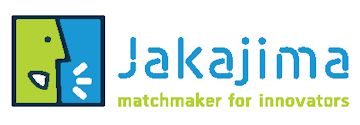3D food printing is an emerging technology that can customize food designs and produce personalized foods. Extrusion-based 3D food printing dispenses food filaments onto a platform, and the object is built layer by layer based on a digital design. The diversity of food materials made it challenging to control the extrusion flow, which often leads to over and under extrusion during printing. Computer vision (CV) offers automated and standardized methods to measure object distance and velocity. Here, we introduce applications of CV to monitor and calibrate 3D food printing.
Filament geometry (width, height, and width consistency) are monitored and measured for quality assurance purposes. The collected filament geometry data can also be linked to printing parameters and food rheological properties to develop predictive algorithms and understand printing controls. Furthermore, CV can estimate the extrusion flow and calibrate extrusion latency per printing material. The extrusion latency calibration can inform printer controls to improve the printing accuracy. The CV tools that we introduce are based on a modular design, which can be integrated with existing 3D printers. The simplicity and automation offered by Computer Vision can help better control 3D food printers to achieve timely and accurate printings of various food materials.
A presentation by Yizhou Ma, PhD Candidate, Wageningen University & Research.
About Yizhou Ma
My professional and personal pursuits are built upon global responsibility, data-driven research, and sustainable system design. My previous research experiences included chemometrics, predictive sensory analysis, dairy processing, and postharvest physiology of fresh produce. I have hands-on formulation experiences in baked goods, flavored water, and high-protein beverages.
About Wageningen University & Research
Wageningen University & Research is a collaboration between Wageningen University and the Wageningen Research foundation.
‘To explore the potential of nature to improve the quality of life’
That is the mission of Wageningen University & Research. Over 6,800 employees and 12,900 students from more than hundred countries work everywhere around the world in the domain of healthy food and living environment for governments and the business community-at-large.
The strength of Wageningen University & Research lies in its ability to join the forces of specialised research institutes and the university. It also lies in the combined efforts of the various fields of natural and social sciences. This union of expertise leads to scientific breakthroughs that can quickly be put into practice and be incorporated into education. This is the Wageningen Approach. Collaboration with other parties such as government, business and NGOs is indispensable. This is in line with the Finding Answers Together ambition.
The scientific quality of Wageningen University & Research is affirmed by the prominent position we occupy in international rankings and citation indexes. The domain of Wageningen University & Research consists of three related core areas:
- Food, feed & biobased production
- Natural resources & living environment
- Society & well-being
Yizhou Ma will be speaking at the 2021 edition of the 3D food Printing Conference.
